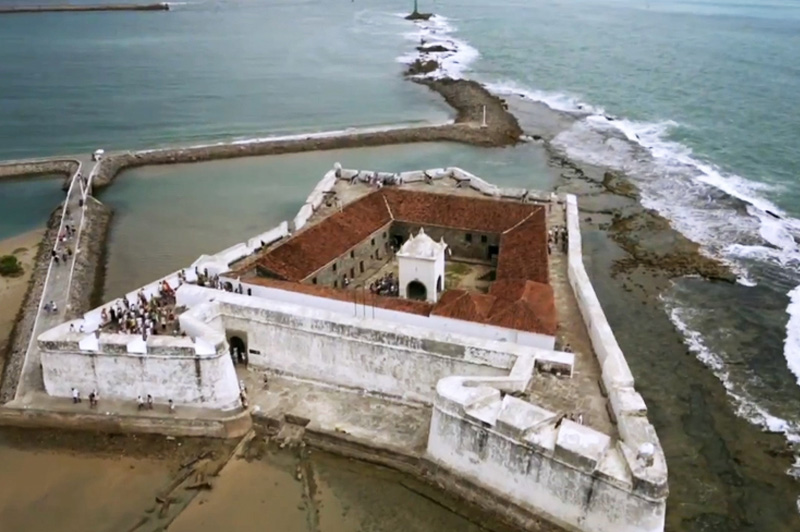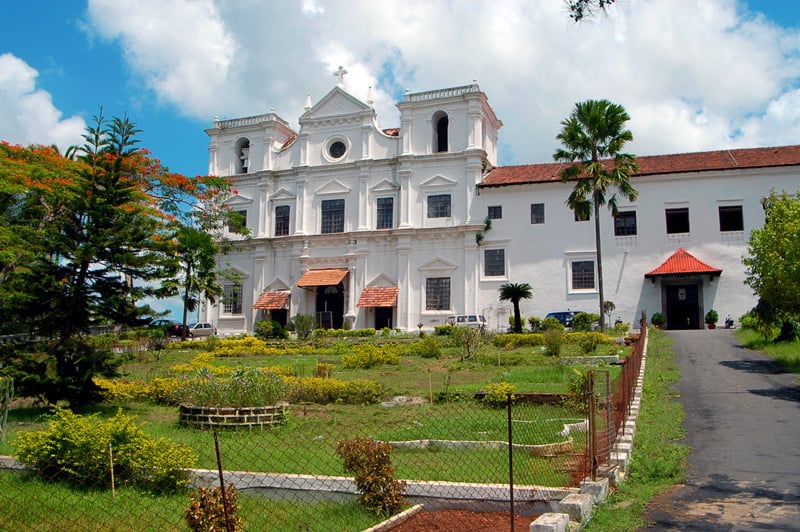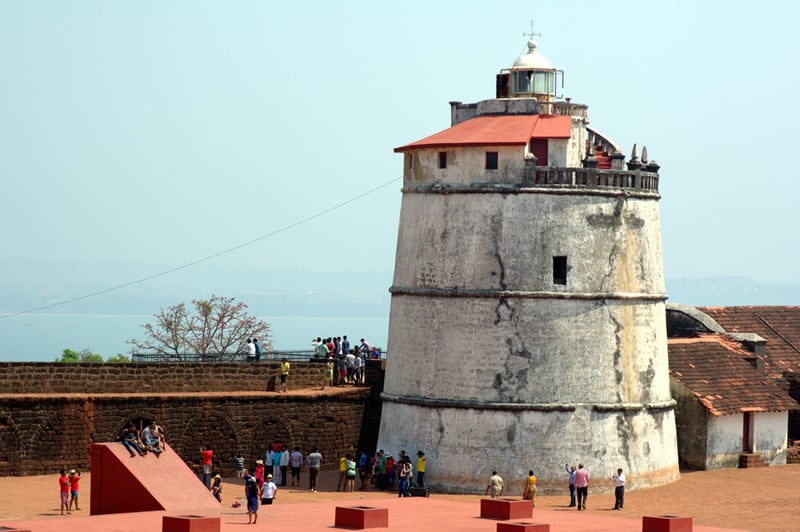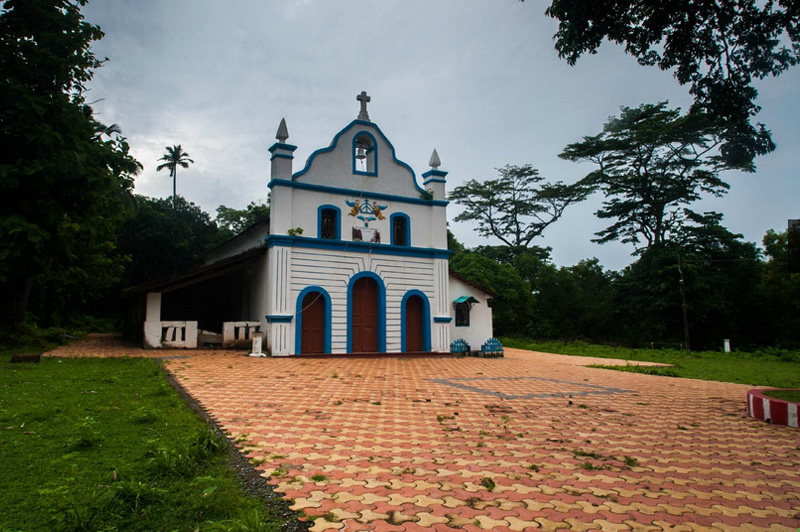
The forts in Goa, which saw the arrival of Christianity, are a treasure trove for travelers who don’t believe in exploring the world the way they have been told to.
If you thought Goa is about sand, sea, and shacks, you should think again. After you had frolicked on the beaches, played with the waves, and drank the hearty wine, it’s time to wander among the remnants of history. The forts in Goa, which saw the arrival of Christianity, are a treasure trove for travelers who don’t believe in exploring the world the way they have been told to. These enduring symbols of Portuguese rule grace the coastline and offer insights into conquests, conflicts, and centuries-old turbulence.
#1. Aguada Fort
It is not only the best-preserved Portuguese fort in Goa, but also the only one that remained invincible. This 17th-century fort, located around 18 km from the capital city of Goa, is strikingly beautiful. What acted as a bastion to keep the Dutch and the Marathas at bay, is now a popular tourist destination inviting travelers to come and enjoy the sweeping view of River Mandovi from the top. What could be a wonderful keepsake for you is a selfie in front of the four-story Portuguese lighthouse – the oldest of its kind in entire Asia. It’s a tempting proposition to stay in the fort because a part of it is now a luxury beach resort.
#2. Chapora Fort

This 17th-century Portuguese fortress offers splendid views of neighboring beaches – Anjuna and Vagator.
If you are driving from Panjim to Mapusa, you would definitely love to have a stopover at Chapora Fort. The black stones strewn around the path, which leads to the fort built out of red laterite stones, create a pleasing contrast with the blue waters of the sea. This 17th-century Portuguese fortress offers splendid views of neighboring beaches – Anjuna and Vagator. While you enter Chapora Fort, the sight of two escape tunnels used by the Portuguese takes you back a few centuries. Just before the sundown, the place wears a surreal look with the Arabian Sea mirroring the crimson sky above. That’s a major temptation for travelers to trek all the way to the top.
#3. Cabo da Rama Fort
This lonely fort near the Agonda Beach preceded the arrival of the Portuguese in Goa. Enter the ramparts of the fort and climb to the top to see the cliffs dropping sharply to the Arabian Sea. It’s an otherworldly feeling to witness sea eagles soaring high above the abandoned canons in the fort. The whitewashed church inside the fort creates a happy distraction for visitors who would also love to
go on a small trek along fort that takes them to sea.
#4. Reis Magos Fort

Reis Magos Fort is the oldest in Goa. Ever since it was built in 1493, the fort has been standing tall on the bank of River Mandovi.
Considered one of the eminent ancient monuments, Reis Magos Fort is the oldest in Goa. Ever since it was built in 1493, the fort has been standing tall on the bank of River Mandovi. Although much of its glory has waned, it still remains a cultural heritage. The Reis Magos Church, located close to the fort, is the best place to visit during the ‘Feast of the Three Wise Men’ held on January 6 every year. It is one of the few places in Goa where this unique festival is held. The impressive interiors of the church, especially the multicolored ‘Three Wise Men (Reis Magos)’, will surely hold your attention.
#5. Rachol Fort

A stone archway is all that is left of the famous Rachol Fort that had withstood violent attacks and vagaries of nature for centuries.
A stone archway is all that is left of the famous Rachol Fort that had withstood violent attacks and vagaries of nature for centuries. It’s a moment of epiphany when you discover the painstakingly preserved Rachol Seminary where Swami Vivekananda had spent three days studying Christian Theology. The anecdotes around this seminary are thrilling. It is said that the fort, during its prime, had 100 guns on its ramparts to defend itself.
#6. Corjuem Fort
It is arguably one of the only two surviving inland forts in Goa made of pitted laterite stone. Explore this military fortress and its gun ports at peace and fix your gaze at the quaint cottages at a distance. Even before the eventful history of the place and the surrounding beauty make you feel heady, you enjoy a scenic drive through the first cable suspension bridge in Goa.
Image Credits: Vaisali Lavtushe, Kaetana



